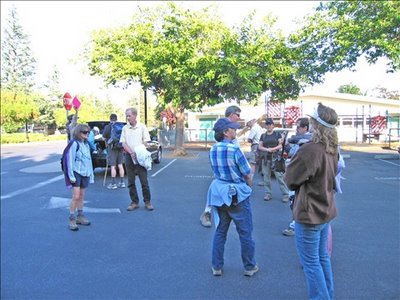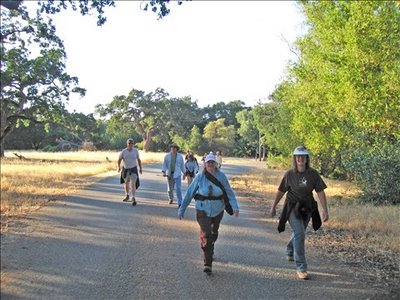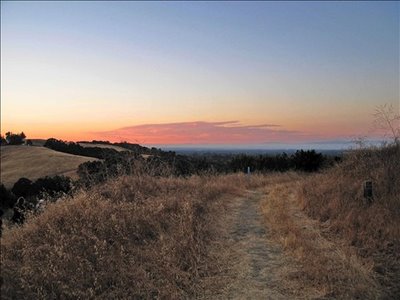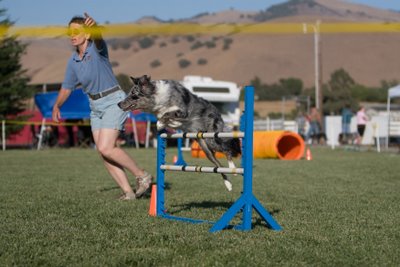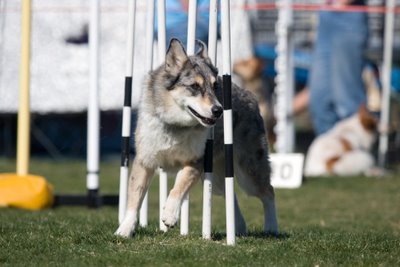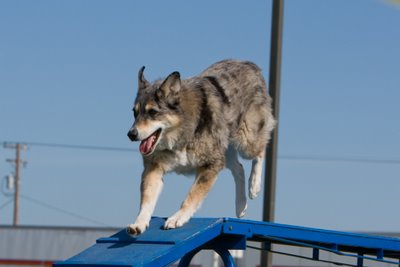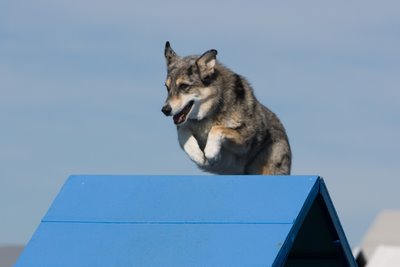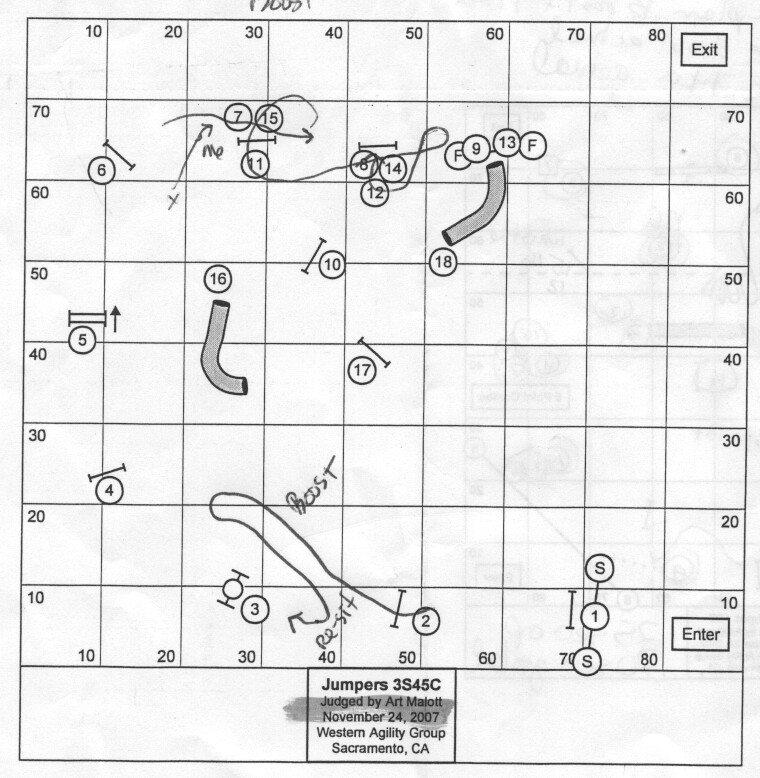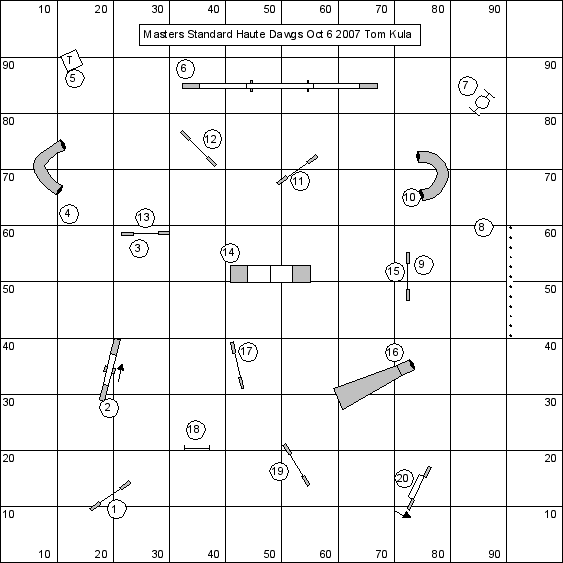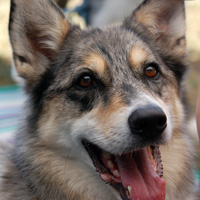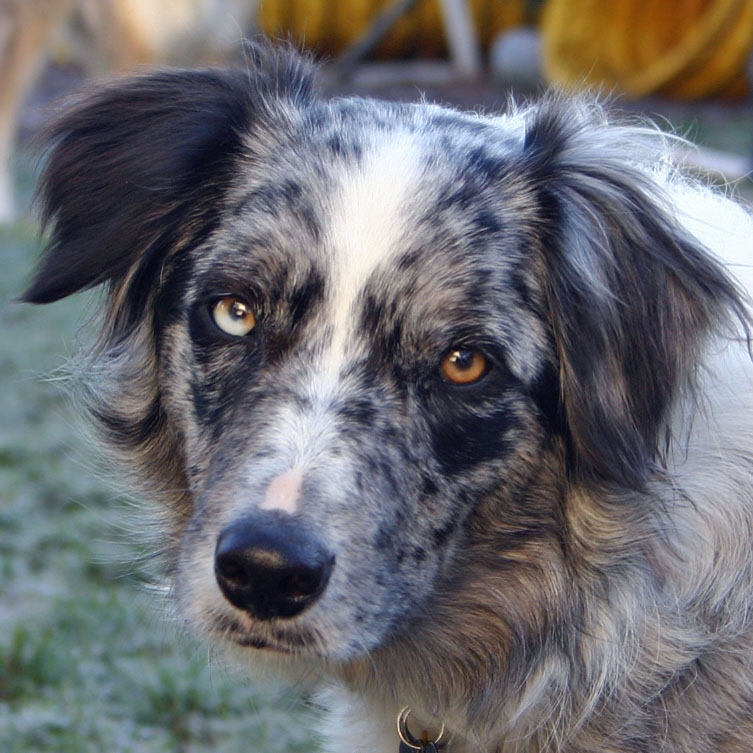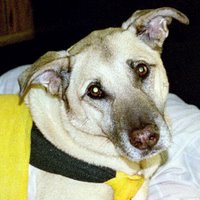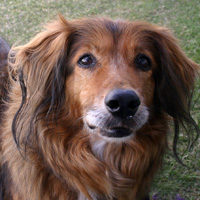OK, Last Videos from Last Weekend, plus Standard Analysis
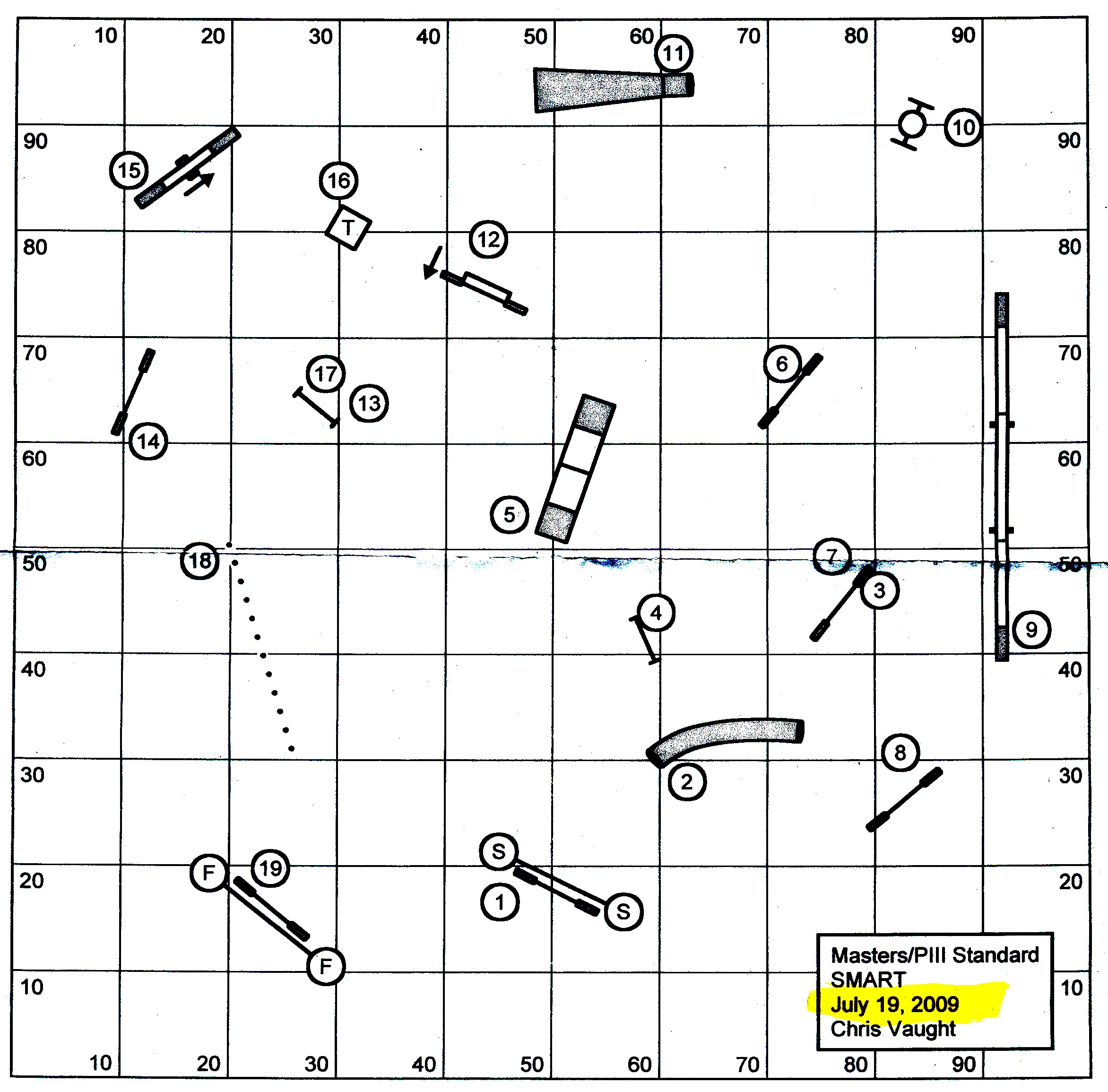
This course was not a gimmee. From my point of view, the toughest parts were 5 to 9, 10 to 15, and 16 to 18. Hmm, that's pretty much the whole course, eh? But I divide them like that because they really presented 3 major handling issues.
From 5 to 9. Coming off the Aframe, the dog's path over #6 is toward the dogwalk, so they have to change leads to get to #7, so now they're heading for the tunnel, and now have to change leads again to get over 8 and to the dogwalk.
You could try a front cross between 6 and 7 if you could leave your dog on the Aframe and trust her to get the contact. But it's a lonnnnng way to go to get to the correct position; you need to be out beyond the North/South 80 line to have a straight line in your path from 7 to 8. So, to cover that huge distance, you're driving towards the dogwalk, which pushes the dog even harder in that direction when what you really want is for them to be turning tightly to get to #7. Some people managed it, but not many even tried.
Most of us sent to #6, hanging back so that we could run in a straight line from near the corner of the Aframe directly towards the far wing of #8, giving perhaps a bit of a serpentine cue for #7. Then rear cross 8 to get a turn to the dogwalk.
10 to 15. Here, you have to ensure that the dog goes through the tire on her way to the chute, which is a Northward push. In an ideal world, you'd like to be on the inside of the curve from 11 to 15, which means that you'd have to be in front cross position on the far side of #12 (around the 40N line) before the dog is coming out of the chute; if you're not far enough, you'll have to veer out around #12 , pulling the dog off #13.
But getting to that position is really tough given the push to #10 and the dog's speed from 10 through 11. You'd have to cover 40 feet in about 2-3 seconds--I'm not that fast! Most people with faster dogs opted, instead, to stay on the Aframe side of #12, give a serpentine cue, and rear cross 13.
16 to 18. The line from the table to the weaves is not straight. If you can leave your dog on the table while the judge is counting down 5 seconds, you could get into front cross position between 17 and 18 and get a nice smooth controlled path into the weaves.
You could also get into serp position on the Aframe side of #17. I think that either of these, if done right, would get the smoothest entry into the weaves.
Boost I don't trust to keep her elbows on the table. Tika might be OK, but I'd have to watch her carefully and not make an sudden moves or gestures or she'd be off the table in a flash. I elected instead to stay on the teeter side of #17, pull as if we were going to #14 until the dog was in line with the weave entry, and then use "left weave". Both dogs executed well, but I think it's a slower entrance than the preceding choices because it's not as obviously a semistraight line to the dogs.
Tika's Run
Tika's time was 43.75 on a standard course time of 54. We lost some time when I didn't get my line from 6 to 8 quite right and she turned the wrong way after 8. Still, it was good for 2rd place out of nine P3 22" dogs--the winner was 3 seconds faster.(3-Dog Video versions.)Boost's Run
Boost's time was 39.96 (4 secs faster than Tika) with a SCT of 51. I expect her to be faster than Tika--in fact I expect her to be MUCH faster, so with Tika's wrong turn, their times are really disturbingly quite close to each other. The main thing with Boost is the stop on the contacts, which I'm not ready to sacrifice for glory in most cases. Not interested in Top Ten points particularly (except for fun). (3-Dog Video versions.)Gina's Run
I include this with running contacts for comparison with littermate Boost. Tim has worked very hard on consistency; there was a long time where they weren't making a lot of contacts, but this weekend they were gorgeous. Now they just need to fix the bar-knocking thing. (Sound familiar?) And Gina moves through the course with a bit more confidence than Boost, it seems to me. Her time was an amazing 34.2ish, faster than ANY other masters or p3 dog, including Luka (in the same range) and the fabulous Sweep (36-plus). I love watching them run. (3-Dog Video versions.)Labels: Boost siblings, boost speed, course maps, other people's dogs, speed, Tika speed, videos
Complete list of labels
